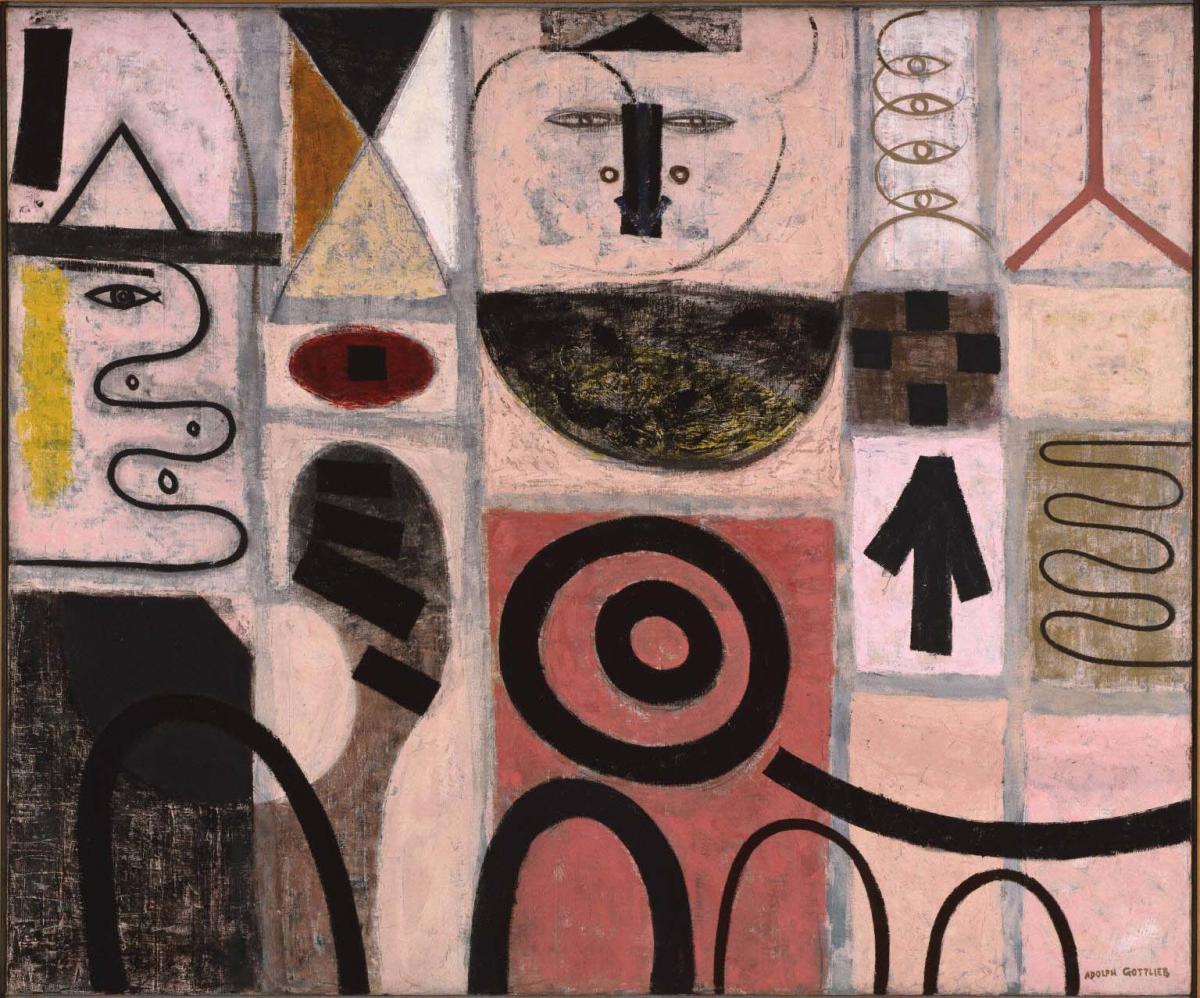The Seer
Adolph Gottlieb ( 1950 )

Over the course of a decade, Gottlieb painted more than 500 pictographs, which refer to the archaic art he saw in the American Southwest and to the art of non-Western cultures. Gottlieb’s paintings, with their loose grids enclosing cryptic symbols, resemble the pictographic writing of ancient cultures—whose meaning is often mysterious to the modern mind. Pictographs also represented Gottlieb’s distinctive solution to the aims of abstract expressionism: to instill paintings with meaning not limited to particular cultures, times, or places. This concern arose from the disillusionment of World War II, as well as dissatisfaction with earlier intellectual artistic approaches of the abstractionists and the insular, conservative style of American regionalist painters.
The pictographs are pervaded by implications of duality and mystery. Gottlieb sought to create tensions evoked by the opposition of enigmatic subjective content within a structured format. While he acknowledged that each symbol was “independent and occupying its own space,” he added that “at the same time [each has] the proper atmosphere in which to function…in harmony” with the others.
Elements of the pictographs are the result of several stimuli to which the artist was exposed during the late 1930s. Because of its geometric elements and flat picture plane, the grid format may have been inspired by the work of other artists: Joaquín Torres-García or by Piet Mondrian. But the wide variation of the symbols derives from Gottlieb’s fascination with the unconscious mind and primitive art. Through fellow artist John Graham, Gottlieb became intrigued with Jung’s psychology, which led him to search for content in recurring images symbolizing “man’s primitive… motivations.” The European surrealists, many of whom immigrated to America during the war years, provided Gottlieb further encouragement to look within his own mind for sources.
Gottlieb emphasized the primitive content of his pictographs by using colors derived from cave painting and Native American art—slate gray, tan, black, and clay, often applied in layers to suggest archaeological stages. In The Seer, Gottlieb emphasized the archaeological quality of the color by adding sand to the paint. The boldly drawn totemic designs make numerous references to the human body—the stick figure in the upper right corner, the four-finger motifs along the bottom and right side, and the repeated eye motif. The eye, derived from surreal and primitive art, appears frequently in his pictographs and may suggest the artist’s vision.